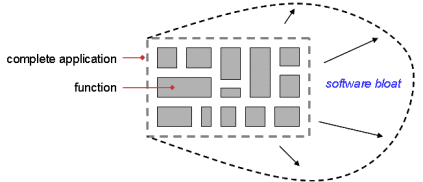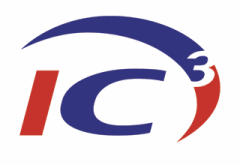My Personal Library on Amazon
An open letter to Jeff Bezos
Dear Mr. Bezos,
Here is an idea for an Amazon service that leverages your technology and that allows you to squash Google's attempts to offer its users 'My Library' in 'Books'. I had this idea months ago and it is my frustrations with Google Books that prompts my writing to you today. Here it is, in a nutshell:
I'd like to be able to create My Personal Library the same way I create my Wish List, i.e. by using Search to find the books I own, in your database, and by clicking 'Add to My Library'.
So simple that I am surprised that you didn't offer it a long time ago (no wonder that you're only 11th in Business Week's list of the most innovative companies;-). You have the technology. You have the best database (Google's is terrible). You can implement the few required modifications to the user interface in a matter of days. I'm volunteering to beta test, of course.
In fact, I'd like to create, separately (and in priority):
- My Personal Book Library
- My Personal Music Library
- My Personal Video Library
In release 2.0, I'd like to be able to create my own categories, e.g.
- For books: business, design, history, science, fiction, etc.
- For music: jazz, classical, Latin, etc.
- For video: comedies, TV series, etc.
If you do that for me (and for the millions of Amazon customers), I'd Opt In to let you use my libraries to make really sensible personal recommendations, based on the dozens of significant books I own and keep, not on the few I bought recently for myself, my wife and children, my friends, etc. You could still use recent statistics to propose gifts to offer to these persons.
So, we're talking here of a proverbial win-win situation. Better service for me. Increased revenue for you.
Sincerely,
Henri Aebischer
Of Mice and Elephants
How resilient are you against competitors?
Case study: The vanishing of minicomputers
If you are a start-up growing quickly, you will soon emerge on the radar screen of large competitors; and if your product is easy to imitate, you can be destroyed in a few months. However, the entry of big guys can legitimate your market but it becomes like sleeping with an elephant: you might get crushed in the process.
Smaller competitors can be even more dangerous because, like mice, they are faster, more ‘hungry’, and you may not notice them until they actually attack you.
The following case study illustrates both threats.
The vanishing of minicomputers (simplified history of ‘minis’)
- Minicomputers emerged in the 1960s using transistors and core memory to offer simple, compact, low-cost, and yet powerful boxes to users who were mainly engineers working on scientific, industrial or telecom applications.

- Initially, it was the story of start-ups eating market share off the established firms lead by IBM. Digital Equipment Corporation (DEC) created the minicomputer market with the PDP-8, a 12-bit machine launched in 1964. In 1969, Data General outflanked DEC with its 16-bit Nova (picture - Source: Wikimedia Commons) and quickly gained market share. Many small and large companies joined the mini bandwagon, including Hewlett Packard, Texas Instruments, Interdata, SEL, etc.
- Then the empires struck back. First, in 1976, IBM announced its Series/1 minicomputer that led Data General to produce an ad that said: "They Say IBM's Entry Into Minicomputers Will Legitimize The Market. The Bastards Say, Welcome". Then, DEC replied with its 32-bit VAX, regaining at the same time the lead over Data General.
- A few years later the PC tidal wave powered by IBM, Microsoft and Intel took over the control of the low end of the small computer market and, eventually, the mini makers disappeared one after the other. Logically, they were in a better position to fend off newcomers like Apple, Commodore and Tandy but they all missed this opportunity. In 1977, Ken Olsen, founder of DEC declared: “There is no reason for any individual to have a computer in his home.”
- Finally it became a shark eats shark business. In 1998, the first major casualty was the acquisition of DEC by Compaq, one of the leaders of the PC market. Compaq, that underestimated the direct selling model of Dell, a latecomer in the market, was in turn absorbed by Hewlett Packard (HP) in 2002. Meanwhile, Data General dwindled down until they were an easy prey for EMC in 1999.
The minicomputer had lasted less than 40 years.
An Idea for MacBook Light
The follow-up to my proposal for MacBook Light
In the previous entry, I suggest the need for a simpler Macintosh that fulfils Apple's original ambition of radical ease-of-use. Here is a possible step in that direction.
My next-door neighbour and good friend is a professional music composer, organ virtuoso and avid Mac fan. Today, he gave me a crash course on GarageBand (I promised not to play my compositions on my 100-Watt speakers ;-). His Mac Pro dock (I’ve learned how the ‘table’ is called since my previous entry) seems as long as a Jumbo Jet runway and I am wondering how he find the right app icon in this endless strip?
I already have small problems finding my way through the dock of my new MacBook Pro dock that has only a few amenities (Acrobat Reader, Firefox, etc.) added to the standard Apple stuff. How do Mac beginners cope? “Better than Vista beginners” is a right answer. But, maybe, a new approach could be appropriate.
Hence the idea for a MacBook Light feature: a series of sets* that cut** the richness and complexity of today’s Mac into simpler families of functions.
 Examples:
Examples:
- Music & Sound (incl. iTunes, GarageBand, …)
- Photo & Movie (incl. iPhoto, iMovie, …)
- Internet & Email (Safari, Mail, iChat, Address Book, …)
- Office & Business (iWork, Mail, Address Book,…)
- Tutorials & Support
Each set contains applications supplied by Apple, a view of corresponding document folders and documentation (e.g. PDFs), tutorials, examples, etc. Maybe also Safari with bookmarks for relevant sites, e.g. Music Safari. Users can modify the sets and include additional applications (e.g. Logic Audio into Music & Sound). The same function can be accessed from different sets (e.g. Mail).
Combined with other simplification efforts, sets* would make Macintosh easier to learn and use, wouldn’t they?
NOTES:
* I deliberately avoid the word ‘mode’ that has a specific meaning in the software world – with friendly greeting to my former boss, Larry Tesler.
** I call that ‘salami tactics’: deliver luxuriant complexity in digestible slices rather than as a big sausage (image by André Karwath aka Aka, licensed under the Creative Commons Attribution ShareAlike 2.5)
How About a MacBook Light?
The follow-up to my dream and a wake up call to Steve Jobs
After ten years of hard labour on Windows, I’m coming back to Macintosh. I just bought a MacBook and I am fascinated by how easy it still is to do most things without even thinking. Yet I am also impressed by how much the Mac has grown. Do most Mac owners use all the functions offered on the ‘table’ at the bottom of the screen? (I know, it’s like calling a ‘mouse’ a ‘hamster’).
Hence, probably, the wild dream I had recently: a contract from Steve Jobs (himself) to design a Macintosh stripped of all not absolutely necessary features and weighing less than a feather. I would love to tackle this challenge because it’s time for manufacturers of computers, consumer electronics and other modern life gadgets to realise that more is less.
A recent survey of the British magazine “Which?” indicates that nearly two thirds of consumers said that some technical products have lots of functions they don't understand and never use. And more than three quarters felt manufacturers should be encouraged to make simpler versions. The products reviewed include remote controls, digitals radios, mobile phones, digital cameras and wireless routers. I’m sure that the inclusion of PCs in the survey would have pushed the numbers up.
 So, Steve, MacBook Air is very thin, indeed, but is it ‘light’ enough? Time to wake up and discuss this gig with me: the world’s slimmest notebook. MacBook Light. Then we’ll discuss the world’s fastest notebook. MacBook Hot … and its thin version: MacBook Hot Air. :-Q
So, Steve, MacBook Air is very thin, indeed, but is it ‘light’ enough? Time to wake up and discuss this gig with me: the world’s slimmest notebook. MacBook Light. Then we’ll discuss the world’s fastest notebook. MacBook Hot … and its thin version: MacBook Hot Air. :-Q
I Had a Dream
The law of conservation of energy for software
Last night I dreamt that I earned a contract with Apple by explaining to Steve Jobs my law of conservation of energy for software. This law stipulates that, in an isolated system comprising designers, programmers, testers and end-users, the energy spent to execute a defined function is constant. The more energy spent in the proper design and flawless development of the software, the easier it is for the user to perform the function effectively.
By function I mean a simple application component like insert a picture, create a table, print a page, etc. For, in the case of a complete application, another law applies: the more energy spent to expand the application with additional functions, the more difficult it becomes for the user to master the application, even if he/she uses a limited number of basic functions. We all know the frustrations of dealing with software bloat.
In my dream (sigh!), Steve was so impressed by my exposé that he asked me to work on the design of a MacBook Light, a Macintosh stripped off of all features not used by the majority of users. I said: “You mean a kind of Macintosh for Dummies?”. “Absolutely not”, he replied, “dummies choose Vista.”
More on this in a later entry.
PS --- I really had that dream, the discussion with Steve about the law of conservation of energy and the gig about the stripped-off Macintosh. The only invention is the “dummies choose Vista” line from Steve. (He would never have said such an acerbic thing ;-)

